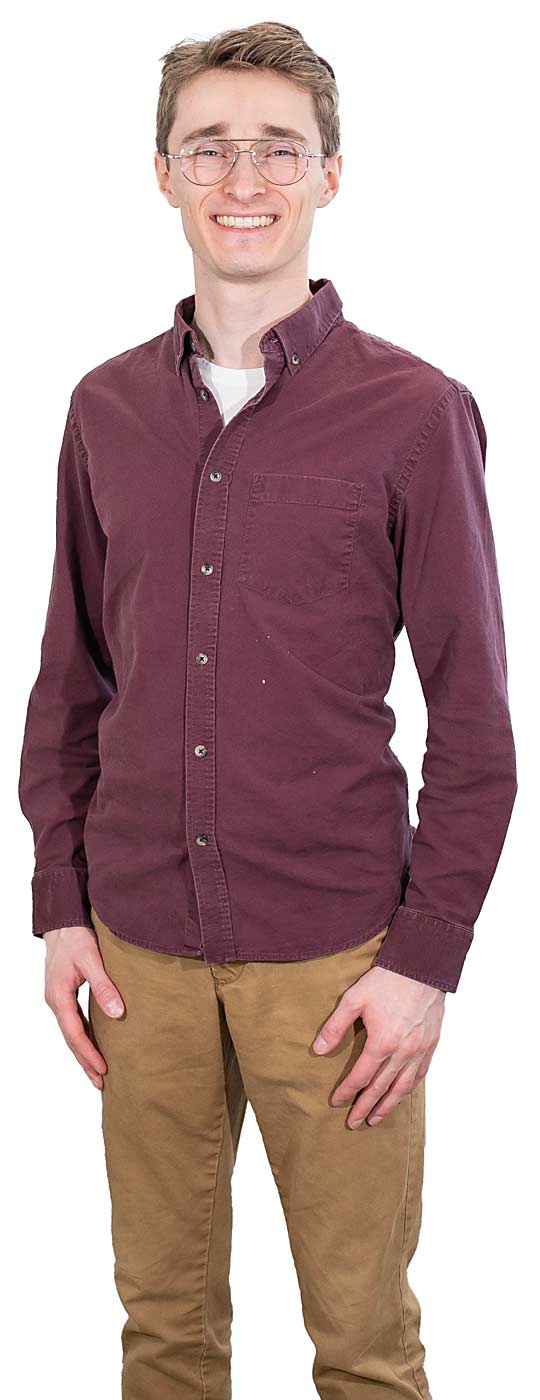family background/ Jon grew up in a suburb outside of Philadelphia and is pursuing his doctorate in plant pathology at WSU. He’s the son of Christine and Gregory Puglisi.
age/ 25
hometown/ Horsham, Pennsylvania
crops/ apples
business/ doctoral student at Washington State University
How did you find your way into tree fruit?
During my undergraduate years, I really learned that plants were awesome. I had thought for the longest time I wanted to do medicine. But after getting into an intro research lab on plant biology, it really sparked my interest for doing academic research in a lab scenario working with plants. When you work with plants, you have a lot of flexibility with your research, and it just feels good to work with them.

I eventually pursued a research internship studying plant biology, gene editing and CRISPR. Working with gene editing was a great experience and it made me want to pursue something that was closer to the end-product. Can I find a career where I still work in academia and also work in research? Can I work on research where I go out and meet the people that my research is helping?
I really wanted to be closer to that end-product, and that’s what led me to plant pathology. To me, it’s a merging of working with plants and working with people — being able to get out in the field and shake hands with growers to figure out what the issues are. I get to leverage my knowledge as a scientist/geneticist/plant pathologist to help with their issues.
What are you working on now?
I’m working with gene expression of mold that grows on apples. Even though I think growers might not be directly interested in the gene expressions of mold species that grow on their apples, they might be interested in the conclusions that I draw and the wider implications of the research.
That’s why I say my research is not directly applied. I’m not doing a simple fungicide trial — you know, X fungicide works 70 percent better than B fungicide. My research is a bit more basic in that sense. My project is on assessing the fitness of blue mold, which is a postharvest fungus of apple and pear.
This is a really big deal in terms of postharvest storage capability of growers in Washington and Oregon. Blue molds are one of the most important postharvest issues.
Due to its economic importance and how prevalent it is, we’re looking at fungicide-resistant strains of blue mold. Additionally, in the Pacific Northwest, we only have access to a few postharvest fungicides. So, we don’t have a lot of tools in our tool case to really work with this very effective pathogen.
Growers end up rotating between three or four fungicides, and we’re starting to see resistance crop up in them. With some of these strains, I’ve run tests where I used three fungicides at once, and they’d grow like I didn’t even apply anything. The big deal with my project is I’m looking at how the fungicide-resistant mold compares to the fungicide-sensitive mold.
Can you explain how the project might help?
We want to find out if these resistant strains keep pace with the sensitive strains. If they can keep pace, that means that even if we remove the fungicide, and there’s no selective pressure, that fungicide resistance will remain in the population because it can compete just as well as the sensitive strains.
I’m trying to find if there are fitness penalties with my project. We hope that if we take away the fungicide, the sensitive strains are going to do better than the resistant strains, and they’ll eventually retake the population. So, when you go back and apply fungicide, you’ll have a sensitive population again.
A fitness penalty means that resistance is not durable. You’d be able to rotate away from it through different chemical applications or even reducing your chemical application as a whole. What I’m learning may have wider implications that we can draw from my research.
What would you tell young growers about your passion?
I get the opportunity to go out with growers and discuss the issues they’re actively dealing with, such as blue mold or other postharvest decays. When you’re working with a more basic and fundamental research project, sometimes you lose that connection and it’s hard to see the forest through the trees.
Some research projects, you’ll be looking at one particular tree for four or five years. Because of that you don’t get to see the rest of the forest. But with plant pathology, I feel like it’s easier to talk with people who have real issues and are working with their crops because it’s their livelihood.
I can really step back and look at the whole orchard in this scenario. I can really see the forest in this career. As a researcher, I always want to take my work one step further into the unknown, and that’s what really drew me to research and academia. The ability to take it one step further into the future is thrilling.






Leave A Comment